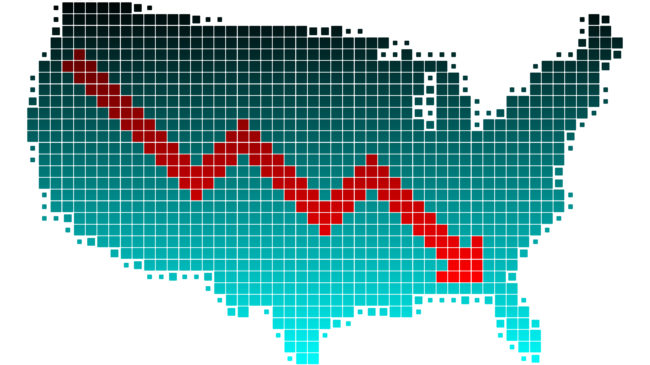The economic downturn and impact of COVID-19 is bringing national attention to the funding challenges affecting many state and local public pension plans.
The New York Times’ Mary Williams Walsh wrote, “The failure to raise more money or reduce payouts could have dire consequences” and The Wall Street Journal’s Heather Gillis reported that “pension funds are faced with even lower bond yields and no assurance that the equity market will rescue them.”
Actuarial firm Milliman estimated that pension funds across the nation lost $485 billion in the first quarter of 2020, although April brought significant rebounds, with an aggregate 5.92 percent investment return.
While not all public pension plans will be equally affected by the stock market volatility and disruptions, each will likely need to address the significant losses in fund assets. Pinning their hopes on market returns to restore solvency likely won’t be enough for most of these public pension plans, as was proved during the decade since the Great Recession.
Some state pension plans, like the Tennessee Consolidated Retirement System, were at or near 100 percent funding before the recent economic downturn. Tennessee Department of Treasury staff recently argued that the state’s pension funding ratio would cushion “the impact so any increases [in employer contributions] would be at a manageable level.”
But other states, like Illinois, have been severely underfunded for decades. On April 17, the Illinois State Senate president sent a letter to Congress asking for over $40 billion in federal funds, including $10 billion for underfunded pensions.
The assumptions and practices that public pension plans used before the crisis will largely determine the impact that the coronavirus and economic downturn will have upon their funding, and, consequently, their ability to recover. Most pension plans will be forced to raise yearly contributions, but states with severely underfunded plans may lack the fiscal capacity to meet these added costs without a major reallocation of other state spending. Additional pension contributions could possibly prompt policymakers to raise taxes or cut back on public services, neither of which are likely to be popular among constituents during the pandemic. Plans that were fully-funded (or close to it) prior to COVID-19 will be better positioned to weather a recession, although they will also likely face difficult decisions given the anticipated declines in state tax revenues.
Since the early 1980s, long-term treasury yields have fallen sevenfold. Pension systems previously relied on bonds as a reliable and secure way to grow their assets, but bonds are no longer providing the same returns due to historically low interest rates. To achieve the relatively high assumed rates of return used by most pension systems today, plans began turning to alternative investments such as private equity and real estate. However, these opaque investment categories came with additional fees and significant risks that often lead to unstable returns. The Pension Integrity Project at Reason Foundation has noted that volatility in returns can contribute to long-term underfunding, as low returns today have an outsized impact on long-term pension funding, given the power of compounding.
Now is the time for pension plans to begin to think about resiliency, and the possible impact that future pandemics and other natural or economic disasters could have upon plan funding levels. For decades, plans have taken the assumption that 8 percent returns were consistently achievable and that the diminished investment returns seen since 2001 would eventually return to the higher historic average.
The impact of this crisis has shown that this assumption is not realistic, especially when history now suggests a major market event could happen every 10-to-15 years. Underfunding has continued to grow due to investment returns that have failed to live up to optimistic return assumptions and the economic recession spurred by the pandemic will only accentuate the issue.
There are strategies for fostering resiliency in pension plans. Lowering discount rates and investment return assumptions would allow stakeholders to have a more accurate estimate of a pension plan’s fiscal status. Shifting the basis of assumption setting and decisionmaking away from long-term—and generally optimistic—forecasts to short-term, reality-based forecasts would allow plans to build shock absorbers to deal with fiscal crises. Plan governance should be reformed to be nonpartisan and focus on objective standards rather than the whims of any current political mood. Planning for resiliency means preparing pensions for the worst-case scenario, not the best. None of this preparation will be easy or cheap, but it is absolutely necessary to deliver the pensions promised to workers and retirees in a way that doesn’t harm taxpayers and the delivery of public services.
Varying approaches to risk—expressed through investment portfolios and assumption policies—help explain the disparate impact of the coronavirus crisis on different public pension plans. Those pension plans that were cautious and conservative in setting their actuarial assumptions should be better able to shoulder the losses caused by the pandemic. However, many public pension plans relied on unrealistic expectations, which essentially hid the true cost of providing the promised retirement benefits.
It’s past time for lawmakers and public pension plans to follow best practices and to seek resiliency to better prepare for future market shocks.
Stay in Touch with Our Pension Experts
Reason Foundation’s Pension Integrity Project has helped policymakers in states like Arizona, Colorado, Michigan, and Montana implement substantive pension reforms. Our monthly newsletter highlights the latest actuarial analysis and policy insights from our team.

